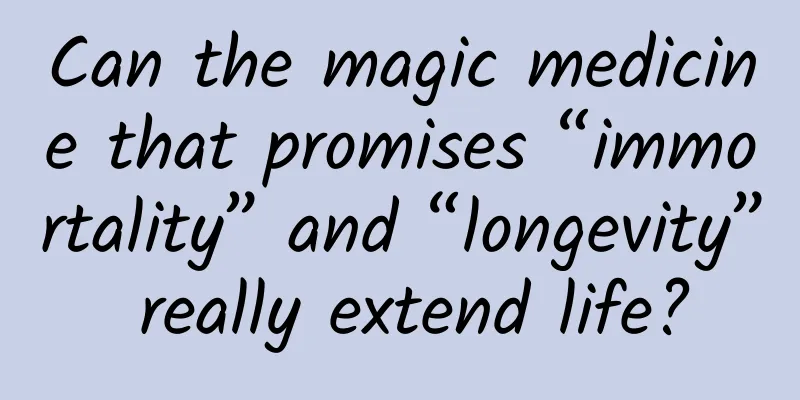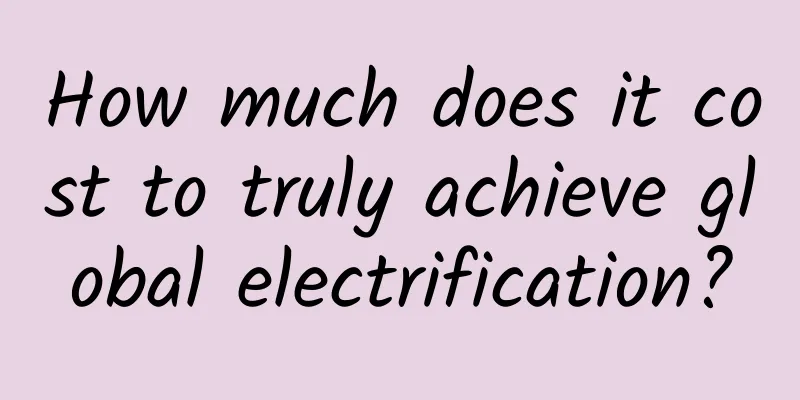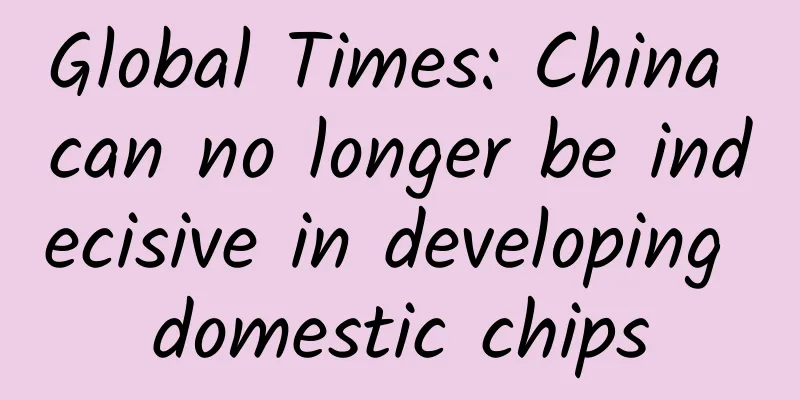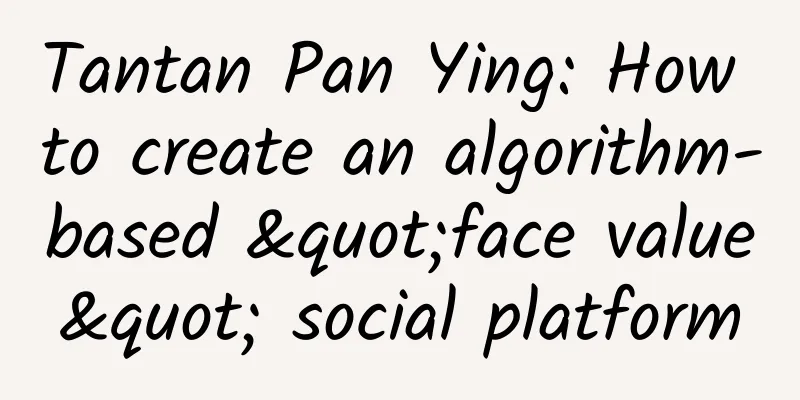Can human tissues or organs completely regenerate, thus achieving immortality?
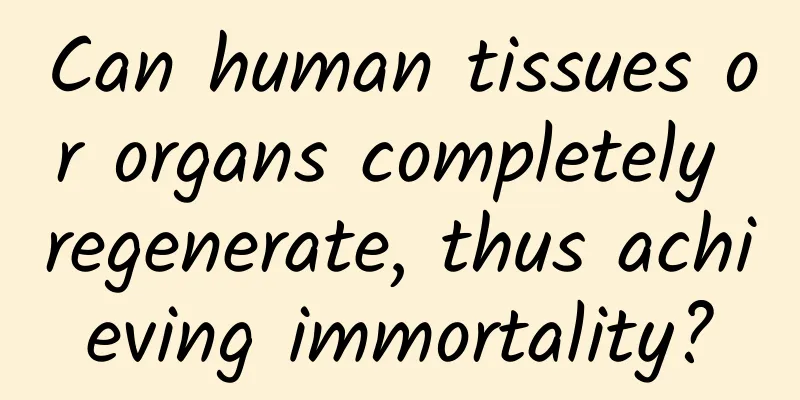
|
Produced by: Science Popularization China Author: Liu Boyan Producer: China Science Expo Understanding aging and the factors that limit lifespan has always been a topic that scientists are very eager to tackle. From the ancient legend of Qin Shihuang searching for the elixir of life to the modern exploration of functional drugs that have anti-aging and life-extending effects, all illustrate people's interest in immortality. With the advancement of medicine and improved living conditions, modern people have a longer lifespan. Some people must want to ask, if human tissues or organs can be completely regenerated, can we live forever? Most organisms will inevitably experience birth, aging, illness and death. If we want to live forever, we need to stop the aging of our bodies. There are some magical animals in nature that do not have such troubles. We hope to learn some "ways to longevity" from them. How can humans achieve "immortality"? Organisms such as hydra and planarians have extraordinary regeneration methods (Figure 1). They are mainly composed of stem cells, which constantly divide to create new cells and replace aging cells. The continuous generation of new cells allows hydra to maintain vitality. Figure 1 Planarians can grow new eyes after removing their eyes (Image source: Reference [1]) But this does not mean that humans can copy the secret of hydra's "younger" life. Hydra is very small, only 10 mm long, and has no organs. This is impossible for humans with an extremely complex body structure. We cannot simply discard aging cells like hydra, we need these differentiated cells to function. Figure 2 Ontogeny and phylogeny of tissue regeneration capacity (Image source: Reference [2]) For example, neurons in the brain are responsible for transmitting information, and we do not want these working neurons to be replaced by a steady stream of new neural stem cells, otherwise we will lose our memory. In fact, humans also have stem cells that can repair and even regenerate tissues. For example, stem cells in the liver can proliferate and produce mature cells with little damage. However, the human body is not made up almost entirely of stem cells like hydra. That's largely because humans need specialized cells to do more. For example, highly specialized liver cells carry out many of the organ's tasks, including storing vitamins and minerals, removing toxins, and helping regulate fats and sugars in the blood. We give cells a certain function, but the price of having a function is that the cells will lose the ability to divide, and when the cells age, our bodies also age. Surprisingly, in 2006, Japanese Nobel Prize winner Professor Shinya Yamanaka discovered that induced pluripotent stem cells (iPSCs) can induce differentiated somatic cells to dedifferentiate and redifferentiate into nerve cells, cardiomyocytes, liver cells, etc., realizing the desire to "rejuvenate" cells. Currently, there are three main approaches to promote tissue regeneration: replenishing tissue with exogenous stem or progenitor cells; chemically stimulating in situ stem cell expansion, differentiation, and/or somatic cell transdifferentiation; and restoring the endogenous stem cell pool with specific biological factors. In animal models, these approaches can alleviate a variety of aging syndromes, including neurodegeneration, vascular degeneration, myocardial infarction, and osteoarthritis. Advances in stem cell technology can improve methods for repairing body damage. For example, the replacement of cardiomyocytes in the normal adult mammalian heart is very slow, while the fetal heart still has less mature cardiomyocytes with considerable regenerative potential. Based on this, Yanpu Chen et al. used transcription factors, including Oct4, Sox2, Klf4 and c-Myc (OSKM), to specifically induce dedifferentiation of adult cardiomyocytes, conferring regenerative capacity to the adult heart. In disease applications, it can be understood that in disease states such as before and during myocardial infarction, short-term increase in OSKM factor expression can induce mammalian cardiomyocyte regeneration through dedifferentiation and reprogramming technology, improve myocardial damage and enhance cardiac function (Figure 3). Figure 3: Dedifferentiation and reprogramming can induce mammalian heart regeneration, blue shows fibrotic scar tissue, red shows healthy myocardium (Image source: Reference [3]) In another study, Stamm C et al. promoted myocardial regeneration in patients by transplanting autologous bone marrow stem cells and achieved certain clinical effects (Figure 4). Figure 4: Promoting myocardial regeneration in patients by autologous bone marrow stem cell transplantation (Image source: Reference [4]) With the advancement of technology, the therapeutic strategies for pancreatic regeneration and repair have also been further improved. Currently, the most advanced technology for making functional human insulin-secreting cells, and the only technology that has entered clinical trials, is derived from human pluripotent stem cells (Figure 5). Figure 5: Therapeutic strategies for pancreatic regeneration and repair (Image source: Reference [5]) "Longevity" technology breakthroughs and bottlenecks Regenerative medicine is widely used in the treatment of diseases and is known as a powerful tool to fight aging. But why has stem cell therapy not been clinically promoted and become part of traditional treatment? First, safety is a major concern; after cell purification, a small amount of contaminating undifferentiated cells may remain and may lead to teratoma formation. Second, allogeneic rejection is an unresolved problem. The mechanism of transplant rejection, especially the body's recognition of allogeneic antigens and the molecular mechanism of chronic graft loss have not been fully elucidated. Third, the main reason is that stem cells are living cells. Their customized treatment means that they cannot have strict clinical trials, standardized processes, and large-scale production like traditional drugs. This is a major bottleneck currently encountered in cell therapy. The human body is an organic whole, just like a car. After years of use, various parts of a brand new car will gradually have problems. If it is not repaired and maintained in time, the car's service life will be shortened. Each "part" has its own service life, and they age in different stages. If human tissues or organs can be completely regenerated, can we achieve immortality by replacing damaged "tissue parts" like a car? The answer is probably no. Although some animals, such as planarians and hydras, are theoretically capable of endless regeneration cycles, most animals will gradually decline in health and eventually die. In the normal human body, reinfused or transplanted stem cells have a remarkable ability to self-renew and differentiate, which plays a key role in their internal environment balance and repair after tissue and organ damage or environmental damage. However, the effect of transplantation varies from person to person, and the maintenance of characteristics and function after transplantation also need to be clarified. The effectiveness of cell therapy will be affected by the patient's own conditions, such as whether it can be integrated into the patient's body to function, whether it can maintain full effectiveness, and tissue rejection faced during the transplantation process. If the local and circulating factors that regulate the balance between self-renewal and differentiation are changed, the transplanted cells may not be able to maintain tissue homeostasis and function. In addition, organ regeneration cannot solve all medical problems. Given the biological variability of cells themselves, the complexity of cell therapy is beyond imagination. For patients, there may be problems such as unclear etiology and pathological characteristics of some diseases, complex microenvironment of lesions, and unclear impact of specific disease processes on cell safety and distribution. Therefore, regenerative medicine may not be able to solve all of a patient's health problems. This also means that all problems cannot be solved by a single cell transplant. It must also be combined with other treatment methods. Just like cancer treatment, in addition to surgical resection, it may also be combined with chemotherapy, radiotherapy, targeted therapy, immunotherapy, etc. Only by working together can the disease be defeated. However, scientists are also working hard to find ways to improve it. They can combine genetic engineering technology to modify and edit cell genes to enhance the ability of cells to be used in tissue repair and disease treatment. Finally, we must admit one thing, and we hope that all readers will remember that regenerative medicine is only one of many treatments for diseases and cannot cure all diseases. When you encounter a scam that touts the effects of regenerative medicine, stay away from it! Editor: Wang Tingting References: [1]The Cellular and Molecular Basis for Planarian Regeneration. [2]Preparing the ground for tissue regeneration: from mechanism to therapy. [3] Stamm C, Westphal B, Kleine HD, et al. Autologous bone-marrow stem-cell transplantation for myocardial regeneration.[J]. Lancet, 2003, 361(9351):45-46. [4] Reversible reprogramming of cardiomyocytes to a fetal state drives heart regeneration in mice [5] Zhou Q, Melton DA. Pancreas regeneration. Nature. 2018 |
<<: @Newton: I never thought that my dog could also discover anti-physical phenomena!
>>: On the 413th anniversary of the birth of the telescope, what secrets did Galileo see with it?
Recommend
Methods and key points for operating and promoting online activities!
I think the most important thing in the process o...
As the regional agent of Xindong Takeaway, what opportunities will Xindong Takeaway provide to ordinary people?
As Meituan Takeout has become the dominant player...
APP promotion, how can a single APP reach tens of millions of downloads?
First of all, application promotion should mainly...
The mysterious "water droplets" in cells have been discovered! Is this the "key" to conquering many difficult diseases?
Author: Duan Yuechu and Huang Xianghong According...
Ten key words for entrepreneurship in 2015
[[161410]] In 2015, China's entrepreneurial s...
The whole family is mobilized! The first taste of the TV version of "Eat Pac-Man! Little Yellow Chicken"
Screen: Sound Effects: operate: Plot: Experience:...
How to unblock WeChat? Do you know the most serious consequences of helping others unblock WeChat?
Some online earning platforms offer paid services...
Do you really know our closest primate relatives?
Looking at the natural world today, if you see cr...
Why do birds migrate?
Birds migrate to different areas to breed or over...
Momo, which has 200 million users, not only offers hookups, but also offers information flow ads
When the word "Momo" comes into view, a...
Why do I feel back pain when wearing high heels?
Part 1 In many occasions, high heels are an irrep...
Spain launches first commercial rocket to join space club
Recently, Spain, which is rarely heard of in the ...
The EU is only concerned about its own business, and doesn't care about Germany's problems. Who will suffer from the tariffs on Chinese electric vehicles?
On June 12, the European Commission announced tha...
Google releases a big move! The last update of Android 12 preview version may be released in August 2021
[[394963]] Image credit: juniorbeep/Getty Images ...




